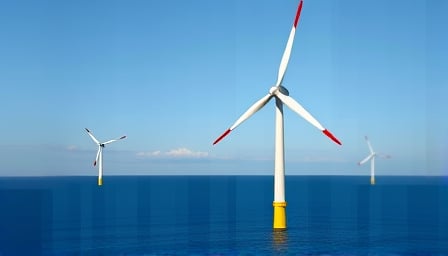Orsted AS Faces Turbulence Amid U.S. Wind Project Halt
In a significant development for the renewable energy sector, Orsted A/S, a leading Danish company specializing in offshore wind farms, bioenergy, and waste-to-energy solutions, has experienced a sharp decline in its stock price. This downturn follows a decisive move by the U.S. administration to halt the Revolution Wind project off the coast of Rhode Island. The project, which was nearly complete, has been a cornerstone of Orsted’s expansion in the U.S. market.
Market Reaction and Financial Implications
The halt has sent Orsted’s shares plummeting to a record low, with a reported drop of approximately 15% on the OMX Nordic Exchange Copenhagen AS. This decline has erased significant value from the company’s market capitalization, which stood at 88.28 billion DKK as of August 21, 2025. The decision has not only impacted Orsted but has also sent ripples through the broader wind energy sector, affecting companies like Vestas and Nordex.
Strategic Responses and Future Outlook
In response to the setback, Orsted has confirmed plans for an 8 billion euro capital increase, aiming to stabilize its financial position and reassure investors. This move underscores the company’s commitment to maintaining its leadership in the renewable energy sector despite the current challenges.
Equinor ASA, a key stakeholder with a 10% holding in Orsted, has stepped in to offer strategic insights and support. The Norwegian energy giant, which has its own extensive experience in offshore wind projects, is sharing valuable lessons learned to help Orsted navigate the complexities of the U.S. regulatory environment.
Long-term Prospects
Despite the immediate financial strain, Orsted’s diversified portfolio across offshore, onshore, bioenergy, and customer solutions segments positions it well for long-term growth. The company’s ongoing projects in the UK, Germany, Denmark, the Netherlands, Taiwan, and the U.S., along with its innovative research collaborations, such as the one with the University of Oxford, highlight its resilience and adaptability.
As the global push for sustainable energy solutions continues, Orsted’s ability to overcome regulatory hurdles and capitalize on its technological expertise will be crucial. Investors and industry observers will be closely watching how the company leverages its strategic partnerships and capitalizes on emerging opportunities in the renewable energy landscape.
In conclusion, while the halt of the Revolution Wind project presents a significant challenge for Orsted, the company’s proactive measures and strategic alliances suggest a robust framework for recovery and future growth.
